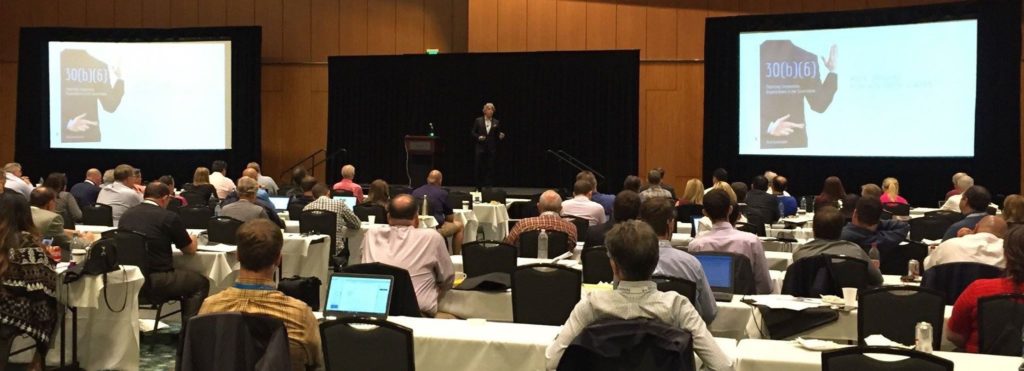K•S Blog
Call Us Today
(763) 746-7800
Get a Free Consultation
Contact Us Today
How to Use 30(b)(6) Depositions in Your Truck Accident Case
By Kosieradzki Smith Law Firm / October 18, 2017

Why Would You Need To Use Deposition 30(b)(6) In Your Truck Accident Case?
When you are involved in an accident case with a large corporation, they will defend themselves by hiding and withholding critical information about your case. Attorney Mark Kosieradzki recently spoke at The Academy of Trucking Accident Lawyers Annual Conference in Nashville about using 30(b)(6) to help you gain the information you need from government entities, corporations and organizations. At the conference, Mark Kosieradzki went into detail of how to successfully analyse your case and identify what specific information you need from the trucking company.
When using corporate 30(b)(6) Deposition, rather than taking the testimony of an individual, you take the testimony of an organization. Mark Kosieradzki has proven and tested time and time again the techniques needed to winning your case.
Mark has literally written the book about using 30(b)(6) depositions. If you were unable to attend the conference and are still seeking help in how to use this method, you can order your own copy of the book 30(b)(6) Deposing Corporation, Organizations & the Government Here. The information contained in this book will empower you to take on the Goliath’s of the trucking industry.
The Power Of The Deposition Is In Crafting The Deposition Notice
In order to get what you want, first you have to know what that is. Step one is figuring that out. Mark Kosieradzki strategically outlined specific questions to state in your legal documents you present to the trucking company. He has collaborated with trucking lawyers all over the United States in crafting these questions to ensure successful results.

You need to determine the critical analysis of your case. What specific foundation questions to ask the trucking company and how to lock them down and bind them to what they testify to in response.
You need to know how to identify issues with your case. Not only the legal issues, but the defenses. The land mines or biases that exist within the jury. All cases are the same in that aspect of playing to the jury. 30(b)(6) talks about the difference between proof and persuasion.
You Can Prove Your Case Perfectly & Still Lose It
When it comes to presenting to the jury you must be persuasive. The jury needs to reach a desired conclusion. Mark Kosieradzki discussed in his presentation this section of the book explaining the information processing theory.
Humans use heuristic principles in decision making. Mark studied the process people go through to reaching their conclusions. It all takes place in the sequence of information that is presented to them. People don’t wait until they have all of the information before making a decision so it is critical to give the right information early on, to frame the issues and resolve them. People change facts into known models of how the world operates. Avoid cluttering your case with information that is not necessary or true.
In the book 30(b)(6) Deposing Corporation, Organizations & the Government, you will learn how to structure depositions to respond to the way people psychologically process information.





